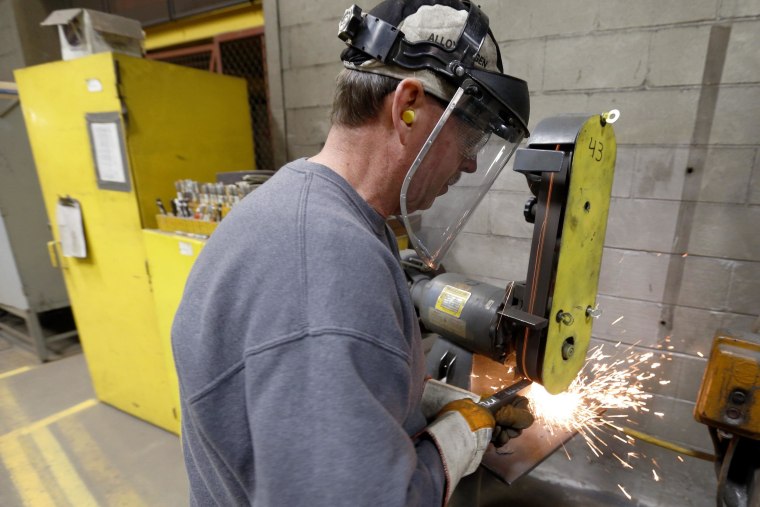Workplace injuries are driving low income Americans deeper into poverty, and casting middle class workers into economic dire straits, a government report said Wednesday.
“Work related injuries illnesses push thousands of American families out of the middle class and they block many more low wage workers from getting out of poverty,” said Dr. David Michaels, the head of Department of Labor’s Occupational Safety and Health Administration, in an interview with NBC News.
That claim is supported by a major new investigation also released Wednesday by the news site ProPublica in partnership with National Public Radio. The investigation documents declines in workers’ compensation payouts in the majority of states. Benefits have been cut so dramatically in some states they “virtually guarantee injured workers will plummet into poverty,” the ProPublica story says.
In the last 11 years, 33 states have reduced benefits or changed policies to make it harder for injured and sick workers to receive assistance. And workers’ compensation benefits vary dramatically from one state to the next. For example, the ProPublica/NPR investigation found that the “maximum compensation for the loss of an eye is $27,280 in Alabama, but $261,525 in Pennsylvania.”
The OSHA report, titled “Adding Inequality to Injury,” which syntheses research from other government agencies and academics, says that “injured workers, their families and taxpayers bear the vast majority of the lost income and medical care costs generated by these conditions.” According to OSHA, workers themselves shoulder half of the cost of their workplace illness and injury. That's in large part because workers’ compensation benefits cover only a fraction of the actual losses to injured workers.
Cuts to compensation
“State legislatures are competing to lower benefits to ensure that injured workers get less and less,” Michaels told NBC. “It’s fundamentally unfair.”
“State legislatures are competing to lower benefits to ensure that injured workers get less and less.”
Cuts to state workers’ compensation have picked up pace in recent years. According to the ProPublica/NPR report, in the 1970’s, a federal commission issued recommendations to Congress on the minimum benefits levels and practices for state benefits. At the time, most states aligned their programs with the recommendations, but in the next decades, they reduced and restricted benefits.
The findings, "underscore the importance of preventing workplace insure and illness,” Daniels said.
But federal fines for employer violations have increased only once in the 40 years since Congress passed the Occupational Health and Safety Act and workplace health and safety advocates say they are not large enough to exert meaningful pressure on employers to protect workers.
The Obama Administration’s budget justification for 2016 has asked Congress to increase fines to OSHA violations. “The administration has been focused on reducing income inequality,” Daniels said. “This has been a major focus of White House and Department of Labor—increasing the minimum wage and ensuring that all workers get the fair wages that they’re entitled to. Protecting workers’ health and safety is a component of this conversation.”
